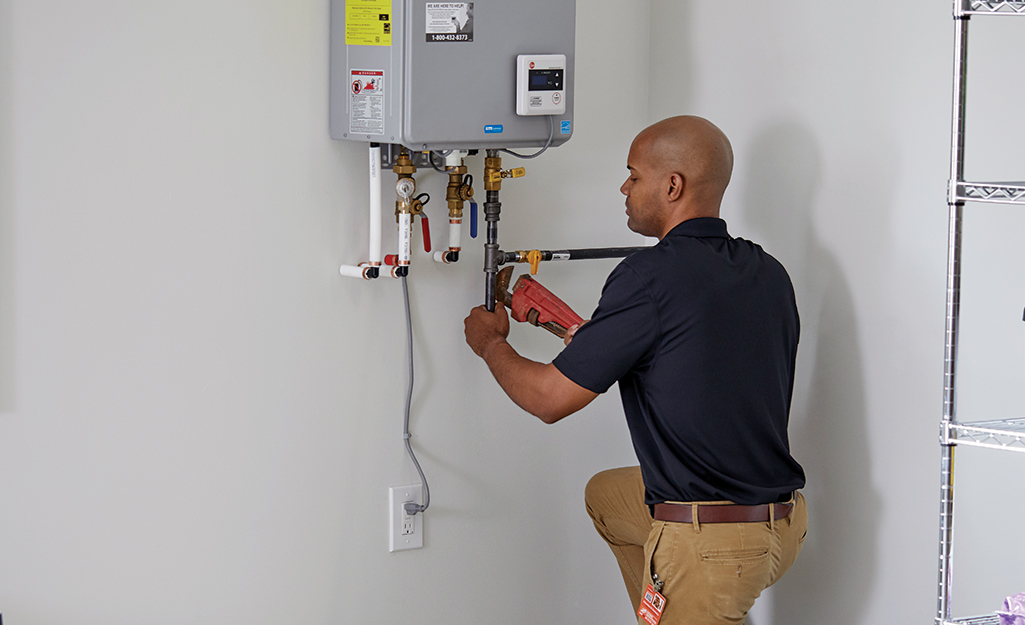Useful Techniques for Caring for Your Home's Hot Water SystemSteps to Successfully Care for Your Home's Hot Water System
Useful Techniques for Caring for Your Home's Hot Water SystemSteps to Successfully Care for Your Home's Hot Water System
Blog Article
Are you currently looking for information about How to Maintain Your Water Heater & Prolong its Life?

Hot water is crucial for day-to-day convenience, whether it's for a refreshing shower or washing dishes. To ensure your warm water system runs effectively and lasts longer, routine upkeep is key. This article provides useful suggestions and insights on just how to preserve your home's warm water system to stay clear of disruptions and expensive fixings.
Introduction
Preserving your home's warm water system could seem difficult, yet with a few easy steps, you can ensure it runs efficiently for years to come. This overview covers every little thing from understanding your warm water system to DIY maintenance suggestions and understanding when to call specialist aid.
Importance of Preserving Your Hot Water System
Routine upkeep not just expands the lifespan of your hot water system but likewise ensures it runs effectively. Disregarding upkeep can lead to decreased efficiency, higher energy costs, and also early failure of the system.
Indications Your Hot Water System Needs Upkeep
Recognizing when your warm water system needs attention can prevent significant concerns. Watch out for signs such as inconsistent water temperature level, unusual noises from the heater, or corroded water.
Comprehending Your Hot Water System
Before diving right into upkeep tasks, it's useful to recognize the standard elements of your hot water system. Typically, this consists of the hot water heater itself, pipes, anode poles, and temperature level controls.
Regular Monthly Upkeep Tasks
Routine regular monthly checks can help catch small concerns before they escalate.
Flushing the Water Heater
Purging your hot water heater eliminates sediment buildup, improving performance and lengthening its life.
Monitoring and Replacing Anode Rods
Anode rods prevent deterioration inside the container. Checking and replacing them when worn out is crucial.
Evaluating and Readjusting Temperature Settings
Readjusting the temperature level settings ensures optimum efficiency and security.
DIY Tips for Upkeep
You can execute a number of maintenance jobs on your own to keep your warm water system in leading condition.
Looking for Leakages
Frequently inspect pipelines and links for leaks, as these can bring about water damages and higher costs.
Checking Stress Relief Valves
Examining the stress relief valve guarantees it works correctly and protects against extreme pressure build-up.
Protecting Pipelines
Protecting hot water pipes lowers warm loss and can save power.
When to Call an Expert
While do it yourself maintenance is advantageous, some problems require specialist competence.
Complex Concerns Requiring Specialist Help
Instances include major leaks, electric problems, or if your hot water heater is regularly underperforming.
Regular Specialist Maintenance Perks
Specialist upkeep can include detailed evaluations, tune-ups, and making sure conformity with safety criteria.
Conclusion
Routine upkeep of your home's hot water system is necessary for performance, longevity, and expense financial savings. By following these ideas and recognizing when to seek specialist help, you can make sure a dependable supply of warm water without unanticipated disruptions.
How to Maintain an Instant Hot Water Heater
Before tinkering with your hot water heater, make sure that it’s not powered on. You also have to turn off the main circuit breaker and shut off the main gas line to prevent accidents. Also turn off the water valves connected to your unit to prevent water from flowing into and out of the appliance. 2. When you’re done, you have to detach the purge valves’ caps. These look like the letter “T” and are situated on either side of the water valves. Doing so will release any pressure that has accumulated inside the valves while at the same time avoid hot water from shooting out and burning your skin. 3. When the purge valves’ caps are removed, you have to connect your hosing lines to the valves. Your unit should have come with three hoses but if it didn’t, you can purchase these things from any hardware or home repair shops. You can also get them from retail stores that sell water heating systems. Read the user’s manual and follow it to complete this task properly. When the hosing lines are connected, open the purge port’s valves. 4. You should never use harsh chemical cleaners or solutions when cleaning your unit. Make use of white vinegar instead. It should be undiluted and you’ll probably use about 2 gallons. 5. Now flush your water heater. This task should probably take about 40 minutes. We can’t give you specific directions for this because the procedure is carried out depending on the type, model and brand of your heater. With that being said, refer to the user’s manual. 6. When you’re done draining the unit, you have to turn off the purge port valves again. Remove the hosing lines that you earlier installed on each of the water valves. Put the valve caps (purge port) back in their respective places and be very careful so as not to damage the rubber discs that are found inside these caps. 7. Now that everything’s back in place, check your user’s manual again to find out how to reactivate your water heating system. 8. Once it is working, turn one of your hot water faucets on just to let air pass through the heater’s water supply pipes. Leave the tap on until water flows smoothly out of it. https://www.orrplumbing.com/blog/2014/september/how-to-maintain-an-instant-hot-water-heater/

I'm very intrigued by Tips on Maintaining a Water Heater and I am hoping you enjoyed my blog entry. Liked our posting? Please quickly share it. Let other people check it out. Thanks a lot for your time. Come back soon.
Services Report this page